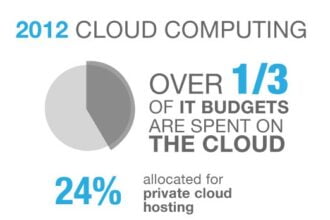If you’re considering relocating to California, you should know the steps you need to take to ensure that you’ll have the proper Medicare coverage. You’ll need to understand the terms of your policy before enrolling.

Medigap plans
If you have Medicare, you may be able to use a Medigap plan, also known as Medicare Supplement insurance, to cover the costs left over after your insurance covers your medical expenses. Click here for more information.
Taking out a Medigap policy will significantly reduce the amount you have to pay out of pocket for healthcare. California currently offers 10 Medigap policies, with each plan offering slightly different premiums and benefits.
There are a few things you should know about Medigap plans. The first is that they’re only available to Original Medicare enrollees. People in Medicare Advantage plans will not qualify for Medigap insurance. Secondly, Medigap insurance is only guaranteed issue when you turn 65 and are enrolled in Medicare Part B.
In California, there’s an annual open enrollment period where you can switch Medigap plans if you’re currently enrolled in Original Medicare.
Secondly, Medigap policies are still available after the Open Enrollment period. During the Open Enrollment period, insurance companies cannot deny coverage because of a pre-existing condition.
You might have to wait six months before you can enroll. This can leave you without coverage. Lastly, you should check whether Medigap plans in California offer guaranteed issue rights. These rights protect Medicare beneficiaries from being turned down for coverage based on their health conditions.
Medi-Cal
The Affordable Care Act has expanded Medi-Cal coverage to include people with higher incomes. Click the link: https://www.healthcare.gov/glossary/affordable-care-act/ for more information about the ACA.
No longer does family status or disability affect your eligibility for Medi-Cal coverage. Medi-Cal has also been extended to low-income children, including those who are undocumented.
Most adults do not qualify for Medi-Cal coverage, though there are exceptions. In some counties, Kaiser Permanente participates in Medi-Cal, and members of Kaiser may keep their current doctor.
If you are denied Medi-Cal coverage, be sure to appeal. Medi-Cal eligibility case workers can make changes to your account when you need them. They are available 24/7 to answer any questions and make sure you’re getting the best Medi-Cal coverage possible.
Once you’ve chosen a Medi-Cal plan, you will need to choose a primary care physician. The health plan you select will include a primary care physician as well as a dentist. Once you’ve selected a primary care physician, you must present that physician’s medical license and Medi-Cal Benefits Identification Card at all providers. The Medi-Cal provider will send you a letter explaining your coverage options.
Medi-Cal prescription drug plans
The state of California is implementing changes in its Medi-Cal prescription drug plan program that could save the state nearly $414 million by 2022. This will improve Medicare coverage in the state of California for its residents. Although a pharmacy benefit manager will manage the program, the state will still be responsible for billing pharmacy benefits.
However, the state is attempting to fix the problems caused by the current system. This includes adding call center staff and giving pharmacists codes to override claim denials.
The Plan has a generic-based prescription drug benefit program, paying for covered medications at the generic rate unless there is a sole source drug. This plan covers the prescription drug benefit for its members and eligible dependents. It also has a three-tier co-payment system for its members.
The cost-effectiveness of the plan depends on the premium the member pays each month. If the premium is higher than the benchmark, the member can enroll in a non-benchmark plan.
Depending on the plan, Medicare can disqualify an applicant for Medi-Cal prescription drug coverage if they are unable to pay for their medications. In such a case, they can opt to continue coverage through an employer or union. After receiving notification, the member can choose another Medigap plan. The member can change plans during the open enrollment period or retroactively if they choose another plan. The SEP is valid for two months following the disenrollment of the previous plan.
Medi-Cal high option supplement to Medicare
If you’re not currently covered by Medicare, Medi-Cal may be the answer. This supplement pays a portion of your Medicare premiums. However, it does come with certain restrictions. For example, if you’re not eligible for Medicare, Medi-Cal will not pay your nursing home costs. If you’re eligible, Medi-Cal will pay for your nursing home care, and you can even request retroactive payments.
Those who qualify for Medi-Cal and SOC have incomes above the income limit, but not too low to qualify for Part B. The monthly premium will be deducted from your Social Security check. If you don’t meet this income limit, you may still qualify for Medi-Cal, but only with a share of the cost (SOC). This SOC works like a deductible. You pay the SOC every month that you have medical expenses, and Medi-Cal will pay the rest.








